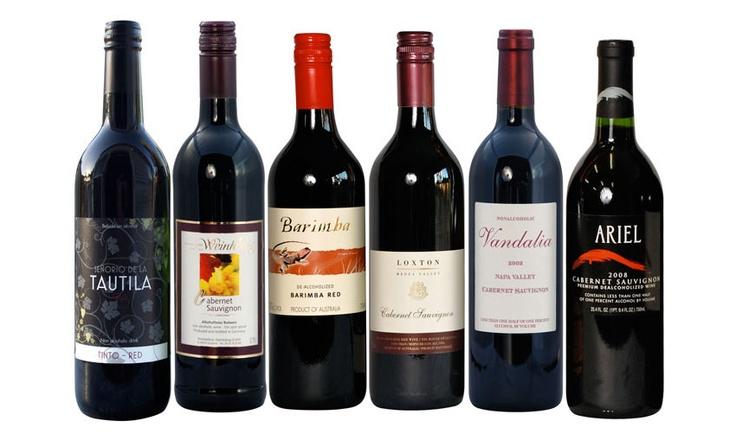The Ultimate Guide to Non-Alcoholic Wines

Wine has always been a symbol of sophistication, culture, and celebration. From ancient times to modern dining tables, wine has played a central role in how people gather, socialize, and enjoy food. Yet, in a world that is becoming increasingly health-conscious and mindful, there has been a noticeable shift in drinking habits. Many individuals are seeking alternatives that allow them to enjoy the elegance of wine without the intoxicating effects. This growing trend has led to the rise of non-alcoholic wines.
These beverages are more than just grape juice in a fancy bottle. They are carefully crafted products designed to replicate the flavor, aroma, and experience of traditional wine, while keeping the alcohol content to a minimum. For those who want to enjoy the ritual of wine drinking without compromise, non-alcoholic wines provide a perfect solution.
The Evolution of Non-Alcoholic Wines
Non-alcoholic wines have come a long way. Early attempts decades ago were often disappointing, with beverages that lacked body, richness, and depth. Many consumers viewed them as inferior substitutes. However, the landscape has undergone significant changes due to advancements in technology and a surge in demand for healthier options.
Modern winemakers employ sophisticated techniques, including spinning cone technology, vacuum distillation, and reverse osmosis, to carefully remove alcohol without compromising essential flavors and aromas. These innovations have turned non-alcoholic wines into premium beverages that rival their alcoholic counterparts in taste and presentation. What was once a niche product has now become a global movement embraced by restaurants, retailers, and consumers worldwide.
Why People Choose Non-Alcoholic Wines
The reasons for choosing non-alcoholic wines are as diverse as the people who enjoy them.
For some, it’s about health and wellness. Alcohol can disrupt sleep, affect hydration, and contribute to long-term health issues. By choosing a non-alcoholic option, individuals can enjoy the experience of wine while supporting healthier lifestyles.
For others, it’s about inclusivity. Not everyone can or wants to consume alcohol—pregnant women, designated drivers, or those with medical or religious reasons often feel excluded during traditional wine-based celebrations. Non-alcoholic wines ensure that everyone can join in a toast without hesitation.
There is also the element of mindful drinking. Some people enjoy alternating between alcoholic and non-alcoholic beverages at social events to maintain balance and moderation. In this way, they can still enjoy the cultural and social aspects of wine without overindulgence.
How Non-Alcoholic Wines Are Made
Producing a wine without alcohol is a meticulous process. Non-alcoholic wines generally start out like any traditional wine. Grapes are harvested, fermented, and aged to develop the full depth of flavor and aroma. It’s only after this process that the alcohol is removed.
The most common methods include:
-
Vacuum Distillation: This process gently heats the wine under reduced pressure, allowing the alcohol to evaporate at lower temperatures without damaging delicate flavors.
-
Reverse Osmosis: The wine is filtered to separate alcohol from flavor compounds. The concentrated flavors are then recombined with water, leaving an alcohol-free product.
-
Spinning Cone Column: A high-tech process that spins the wine at rapid speeds, separating alcohol while capturing and re-blending the aroma molecules.
These methods ensure that the final product is far more than grape juice—it’s a true wine in every sense, just without the intoxicating element.
Varieties of Non-Alcoholic Wines
Just as with traditional wine, non-alcoholic wines come in a wide range of styles. This diversity allows consumers to choose the right wine for the right occasion:
-
Red Non-Alcoholic Wines: Known for bold flavors of berries, spices, and oak, these wines pair perfectly with hearty dishes like roasted meats, pasta, or grilled vegetables.
-
White Non-Alcoholic Wines: Crisp and refreshing, with notes of citrus, apple, and tropical fruits. They complement seafood, salads, and light poultry dishes.
-
Rosé Non-Alcoholic Wines: Bright and versatile, often with strawberry and floral notes. Ideal for summer picnics, Mediterranean dishes, or casual dining.
-
Sparkling Non-Alcoholic Wines: Lively and festive, sparkling options mimic Champagne and Prosecco. Perfect for toasts, anniversaries, or special occasions.
This wide selection makes it possible to enjoy non-alcoholic wines in virtually any setting, from everyday meals to fine dining.
Pairing Non-Alcoholic Wines with Food
Pairing wine with food is one of life’s great pleasures, and non-alcoholic wines follow the same principles. A robust non-alcoholic red pairs beautifully with a steak or a rich tomato pasta. A crisp white works wonderfully with fish, sushi, or fresh salads. Rosé adds a refreshing note to spicy or Mediterranean cuisine, while sparkling wines are excellent alongside cheeses, desserts, or celebratory meals.
The key lies in experimentation. Non-alcoholic wines may sometimes have slightly different acidity or sweetness compared to traditional versions, which opens up opportunities for new and exciting pairings. This makes them not only a healthier choice but also an adventurous one.
Health Benefits of Non-Alcoholic Wines
Non-alcoholic wines are not only enjoyable but also come with potential health advantages. Since they are made from grapes and undergo fermentation, they still contain many of the antioxidants, such as polyphenols and resveratrol, found in traditional wines. These compounds are linked to heart health, reduced inflammation, and improved circulation.
Other benefits include:
-
Lower Calorie Intake: Without alcohol, the calorie count drops significantly, making them a better option for those watching their weight.
-
Better Sleep and Hydration: Alcohol often disrupts natural sleep cycles and causes dehydration. Non-alcoholic alternatives avoid these issues.
-
Inclusivity and Safety: Suitable for people who must avoid alcohol due to health, pregnancy, or religious reasons.
-
Reduced Health Risks: Eliminating alcohol lowers risks associated with liver disease, addiction, and other alcohol-related illnesses.
These benefits make non-alcoholic wines appealing to a wide range of consumers seeking balance and wellness.
Social Impact of Non-Alcoholic Wines
One of the most significant impacts of non-alcoholic wines is how they change social dynamics. At weddings, parties, and professional gatherings, these beverages allow everyone to feel included. No longer does abstaining from alcohol mean sitting on the sidelines with water or soda; instead, individuals can raise a glass of sparkling wine or enjoy a sophisticated red alongside others.
This inclusivity helps create more thoughtful and welcoming environments. It ensures that celebrations remain enjoyable and memorable for all guests, regardless of their drinking preferences.
Challenges in the Non-Alcoholic Wine Industry
Despite its growing popularity, the industry does face certain challenges. One of the main hurdles is perception. Some people still believe that non-alcoholic wines are less authentic or simply grape juice. Changing this perception requires education, marketing, and exposure to high-quality products.
Another challenge is pricing. Because advanced techniques are required to produce premium alcohol-free wines, they can sometimes be more expensive than standard bottles of wine. However, many consumers are willing to pay the premium for the benefits and inclusivity they provide.
Distribution and availability can also be an issue. While larger cities may have wide selections, smaller markets often struggle to stock these beverages. Fortunately, online retailers are helping bridge this gap by offering worldwide shipping.
The Future of Non-Alcoholic Wines
The future looks bright for non-alcoholic wines. With consumer interest in wellness and mindful drinking on the rise, demand for high-quality alternatives is expected to keep growing. Winemakers are constantly experimenting with new grape varieties, production methods, and aging techniques to refine the flavors and textures of their products.
We can also expect to see greater integration into mainstream dining. More restaurants, bars, and hotels are adding non-alcoholic wines to their menus, recognizing the importance of inclusivity. As awareness spreads and perceptions shift, these beverages will become a staple in both everyday life and fine dining.
Conclusion
Non-alcoholic wines represent more than just a substitute for traditional wine—they embody a lifestyle choice that emphasizes health, inclusivity, and innovation. They allow people to enjoy the rituals of pouring a glass, pairing with food, and toasting to life’s special moments without the downsides of alcohol.
With a growing variety of styles, improved production methods, and increasing cultural acceptance, non-alcoholic wines are here to stay. They bridge the gap between tradition and modern values, offering a way for everyone to celebrate, connect, and enjoy the art of winemaking.
- Vibnix Blog
- Politics
- News
- Liberia News
- Entertainment
- Technology
- Образование
- Art
- Causes
- Crafts
- Dance
- Drinks
- Film
- Fitness
- Food
- Игры
- Gardening
- Health
- Главная
- Literature
- Music
- Networking
- Другое
- Party
- Religion
- Shopping
- Sports
- Theater
- Wellness



